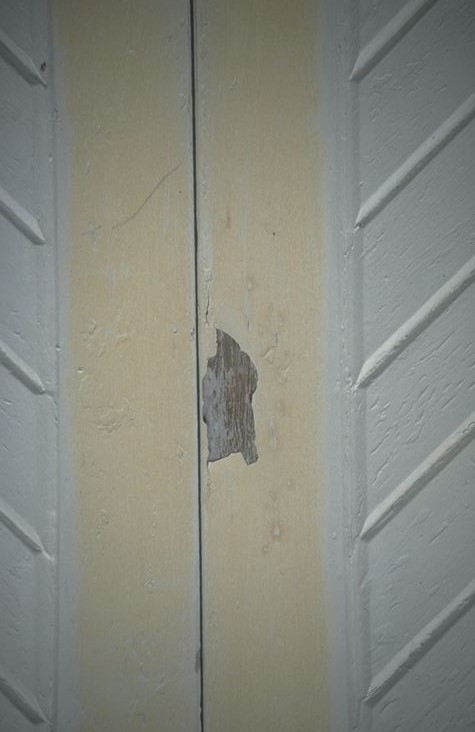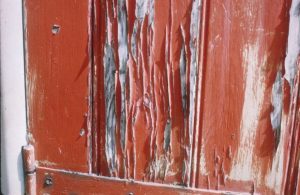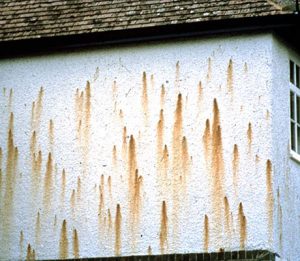Discolouration - Yellowing

Discolouration : See Yellowing.
.
Flaking of Stained Wood Finishings
 Flaking of stained wood finishes
Flaking of stained wood finishes
Cause
Stained wood finishes are translucent/semi transparent.
The applied dry film thickness of these coatings are less than that of a traditional opaque paint finish.
These coatings, particularly light colours, can be affected by ultra violet rays that penetrate the dry film causing the underlying wood to become very dry and fibrous. The performance of translucent wood finishes can vary and special attention should be given particularly to exposed areas such a southerly elevations. For this reason window sills and styles may require attention and re-coating sooner than expected which in some cases can be every six months.
Note: On new building works were the timber items such as windows come to site with an initial stain coating applied they should recoated as soon as possible as the factory applied finish may not protect the underlying substrate from UV rays and can cause degradation of the timber fibers.
Remedy
All the defective coatings should be removed back to bare wood. This should be followed by thoroughly sanding down back to sound wood. All knots and sap residue should be coated with clear shellac knotting. Any areas of wood which need replacing due to damage, should be repaired using a suitable wood repair material. For glazing, linseed oil putty should be avoided and a suitable butyl glazing sealant used. Where repair fillers have been used there may be a slight colour difference. As these wood finishes are semi-translucent any difference in the colour of the surface to be coated will mirror through the newly applied coating. A test area should be carried out as it may be necessary to tint the first coat to match or use a slightly different shade. For redecoration work, if possible, always use the same manufacturers’ product and recommendations.
Repair Care. www.repair-care.co.uk
Available from all leading Paint manufacturers Trade stores and Decorators Merchants including:
Brewers Decorating Centres. - https://www.brewers.co.uk/stores
PaintWell - https://paintwell.co.uk/storelocator
Flocculation

. Flocculation (floating)
Cause
Flocculation (floating) is caused when the pigments have not been dispersed correctly during the manufacturing process. It can also occur if the product is obtained from a supplier who has used a colour tinting machine to provide the shade required. And the mixing/agitation of the paint has not been sufficient to disperse the added colourants.
Remedy
If the paint product was factory made and tinted it would not be possible to have this dispersion rectified, therefore, a new batch would be required. If the product has been mixed by an independent supplier, then it may be possible to have the paint agitated again to disperse the colourants properly. When more than one tin of the same colour is obtained and mixed at source, each tin supplied should be boxed together before use to ensure uniformity of colour.
Flocculation is a manufacturing fault
Masonry Rust Spotting

Masonry Rust Spotting
Cause
This staining is caused by iron oxide being present in the sand content of the stucco finish mix and is activated by moisture coming into contact with oxide particles.
Solution
Ensure the surface is completely dry and apply a suitable sealer to the affected areas which would normally be oil or spirit based. If a standard water based masonry finish is to be applied and a stabilising solution has been used and the finish is glossy glossy finish then this should abraded to provide a suitable key.
Where rust staining is present it is recommended to use an oil based masonry paint based on Pliolite® (Goodyear Tyre & Rubber Co. Inc) resin.